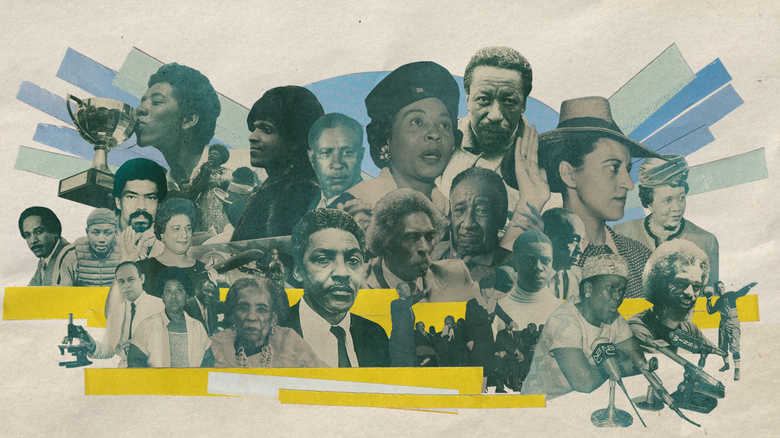
Profiles in perseverance
You may not know their names. But these courageous Black Americans changed history.
Every Black History Month, we tend to celebrate the same cast of historic figures. They are the civil rights leaders and abolitionists whose faces we see plastered on calendars and postage stamps. They resurface each February when the nation commemorates African Americans who have transformed America.
They deserve all their accolades. But this month we are focusing instead on 28 seminal Black figures – one for each day of February – who don’t often make the history books.
Each transformed America in a profound way. Many don’t fit the conventional definition of a hero. Some were foul-tempered, weighed down by personal demons, and misunderstood by their contemporaries.
One was a mystic, another was a spy who posed as a slave, and another was a brilliant but troubled poet dubbed the “Godfather of Rap.” Few were household names. All of them were pioneers.
It’s time for these American heroes to get their due.
February 27

Althea Gibson
1927-2003
She was the Jackie Robinson of tennis
February 26
Bayard Rustin
1912-1987

He organized the 1963 March on Washington
February 25
Sadie Tanner Mossell Alexander
1898-1989

She became an inspiration to Black women lawyers
February 24
Howard Thurman
1899-1981

The scholar whose words inspired Martin Luther King Jr.
February 23
Audre Lorde
1934-1992

Her fierce poetry celebrated Black women
February 22
Ella Baker
1903-1986

She risked her life to rally activists in the Deep South
February 21
Gordon Parks
1912-2006

His photos chronicled the African American experience
February 20
Daisy Gatson Bates
1914-1999

She helped the Little Rock Nine integrate a high school
February 19
Fritz Pollard
1894-1986

He was the first Black coach in the NFL
February 18
Gil Scott-Heron
1949-2011

He said ‘the Revolution Will Not Be Televised’
February 17
Marsha P. Johnson
1945-1992

She fought for gay and transgender rights
February 16
Jane Bolin
1908-2007

The first Black woman judge in the US
February 15
Frederick McKinley Jones
1893-1961

He pioneered the modern refrigeration system
February 14
Max Robinson
1939-1988

The first Black anchor of a network newscast
February 13
Bessie Coleman
1892-1926

The first Black woman to become a pilot
February 12
Fannie Lou Hamer
1917-1977

She riveted viewers at the DNC
February 11
Paul Robeson
1898-1976

One of Broadway’s most acclaimed Othellos
February 10
Constance Baker Motley
1921-2005

The first Black woman to argue before the Supreme Court
February 9
Charles Richard Drew
1904-1950

The father of the blood bank
February 8
Eunice Hunton Carter
1899-1970

She brought down a fabled Mafia boss
February 7
Josh Gibson
1911-1947

They called him the ‘black Babe Ruth’
February 6
Gerald Wilson
1918-2014

A jazz composer who redefined big band music
February 5
Amelia Boynton Robinson
1911-2015

Her beating helped galvanize the civil rights movement
February 4
James Armistead Lafayette
1748-1830*

He spied on the British army as a double agent
February 3
Major Taylor
1878-1932

A fearless cyclist who set world records
February 2
Dorothy Height
1912-2010

She spent her life fighting sexism and racism
February 1
Garrett Morgan
1877-1963

His inventions made the world safer
Credits
Editor: Brandon Griggs
Editorial oversight: Saeed Ahmed and John Blake
Contributors: Simret Aklilu, Leah Asmelash, John Blake, Nicole Chavez, Alaa Elassar, Faith Karimi, Harmeet Kaur, Amir Vera and Sydney Walton
Photo editor: Clint Alwahab
Design and development: Priya Krishnakumar, Alberto Mier and Ivory Sherman






